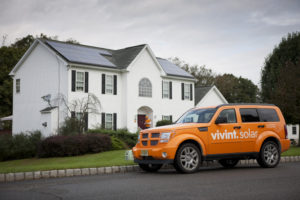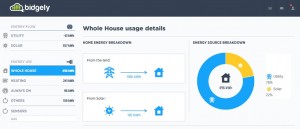A Behind the Scenes look at SolarWakeup
By Yann Brandt, Managing Editor
 The most common question I get about SolarWakeup is how I do it. How do the 9 articles and the morning thoughts get put together so that they hit your inbox at 7am eastern time, 6 days per week? After SPI in Las Vegas, I figured it was a good time to give you a behind the scenes look at how the wheels turn.
The most common question I get about SolarWakeup is how I do it. How do the 9 articles and the morning thoughts get put together so that they hit your inbox at 7am eastern time, 6 days per week? After SPI in Las Vegas, I figured it was a good time to give you a behind the scenes look at how the wheels turn.
To see where it all started, you have to go back to August of 2012. I had just begun a startup and knew I would be somewhat absent in solar for sometime so I pondered ways to stay relevant to the solar industry. Emulating Florida’s Sayfie Review, I told my wife that someone should do this for solar, when she had the brilliant idea that I should be that someone.
So on August 24th, 2012 I wrote 15 of my closest solar friends the first of 675 SolarWakeup newsletters (as of 11.17.2014). Today, the list stands at over 2,000 readers who get the 9 articles and 1 thought (100 words or less) each morning. On average almost 30% open the email every day and 11% click on the link within the email. Some of you go directly to the site and then read about 1.7 articles while there.
Your biggest complaint is that the links don’t open into a new tab and when I post an article by Fox News or Washington Times. My biggest complaint is when you don’t publish enough content which makes my part of the process more time consuming (I call this the Monday morning mashup). Your favorite part is telling me how wrong one of the authors is or to give me a scoop, which is my favorite part. I have enjoyed the few exclusives or breaking news that I was able to break ahead of actual reporters and I always love giving advice to companies and executives on how to improve their content.
One fact that is often misunderstood is that I have a daytime obligation, an amazing job with a great company and team (find me on LInkedin if you want to talk work). SolarWakeup is not my job and I do not monetize it, mostly because I want to be able to write what I think is most valuable and not be beholden to the bottom line. I actually spend quite a bit of money to keep the wheels turning but I feel compensated by your thoughts and feedback and the random notes of encouragement.
The biggest secret of SolarWakeup is that I do it at night. At some point between 8pm and midnight, I pull out the laptop and find the articles. Initially I woke up at 5:30am and found the articles then, but my friends know that 5:30am is not my friend and the additional content published overnight is not that relevant.
So I wherever I am, I get in front of the computer at night (eastern time) and find the articles. I find the articles in this order
- Use worthwhile content that was emailed or tweeted to me that day
- Insert any original stories that readers, contributors or I wrote
- Go through my list of ~30 Google news saved keywords like: solar, solar+Romney, solar + report, solar + letter, solar + nytimes, etc.
- This step typically gets me to about 4-6 articles
- Start going through my list of solar related websites
The list of solar websites is somewhat of a ranking decided by your clicks. I see the articles you are most interested in and reorganize the list of websites according to the success of the clicks. I also adjust based on my judgment so if one site is being particularly promotional or burying specific company (advertiser) info in the article, I push them to the bottom of the list. Some sites also get ranked according to the author so it could be at the top if it is a particular contributor.
Then comes the part about writing the blurb/morning thought. There is little pattern to it but the ultimate goal is to create solar camaraderie or drive action from the readership. I feel like this is the opportunity for all readers to think about the same topic for 30 seconds per day.
Let’s talk logistics. I travel a lot for work, which means that I can be found doing the Wakeup at all sorts of hours, sometimes at noon if I am in Asia. Using SPI in Las Vegas as an example, I would visit with colleagues/clients at dinner, meet up for some drinks and attend a party hosted by supplier. Then when everyone is ready for sleep, I open up the laptop and find the stories. Sorry for the typos….
It has been a great road for the past 2 years plus and it will keep going. I often think it would be great to work with other media platforms or do more original stories. I truly enjoy doing the Wakeup and there are many people to be thankful for that have helped me get here. I hope this quick look behind the scenes was everything you ever hoped it would be. Of course if it leaves unanswered questions, just hit reply on your next SolarWakeup email and it comes straight to me!
See you at 7am!




